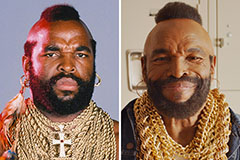Secret Factors To Consider to Remember When Developing a Modern Internet Design That Lines Up With Present Fads
In the ever-evolving landscape of internet design, it is essential to think about numerous pivotal variables that not only reflect present patterns yet also improve individual involvement. A responsive style is critical, ensuring that individuals experience seamless capability throughout various devices. Prioritizing individual experience through intuitive navigation and aesthetic appeal can not be overlooked. web design.
Responsive Design Principles

The core of receptive layout lies in its ability to readjust format and content based on the user's screen dimension and alignment. By using relative units like portions as opposed to fixed units like pixels, designers can create scalable designs that keep aesthetic honesty. In addition, using media questions allows for the application of different styles depending on the attributes of the tool, assisting in tailored experiences that enhance use.
Moreover, responsive layout is not just a technological consideration; it is pivotal in suiting the increasing usage of mobile phones for web surfing. As individual assumptions evolve, making sure availability and performance across all platforms becomes crucial for maintaining involvement and satisfaction. Thus, embracing receptive style principles is important for modern internet growth, promoting inclusivity and future-proofing digital content.

Emphasis on User Experience
Customer experience (UX) has become a central focus in contemporary website design, matching the principles of responsive style by prioritizing just how customers interact with sites. A well-designed UX can considerably influence individual retention, involvement, and contentment, emphasizing the demand for developers to create intuitive and delightful experiences.
Secret aspects of effective UX style include functionality, performance, and looks. web design. Web sites must be very easy to navigate, guaranteeing users can locate the info they look for without confusion. Clear and concise navigation menus, consistent format, and rational content company are vital in attaining this objective. Additionally, capability plays a vital function; interactive elements have to work seamlessly throughout all tools and web browsers.
Aesthetic considerations can not be overlooked, as an aesthetically appealing style can boost user perception and urge exploration. Color systems, typography, and imagery should be attentively incorporated to create a cohesive and interesting interface.
Moreover, incorporating customer feedback into the layout process is vital. Conducting functionality screening and celebration insights from actual individuals can supply valuable info to fine-tune the style and address pain points. Eventually, a solid focus on user experience will certainly aid create sites that reverberate with site visitors, cultivating loyalty and driving conversions.
Value of Access
Access is a fundamental facet of modern-day website design, ensuring that all users, no matter their disabilities or abilities, can connect and browse with electronic web content properly. As the net becomes increasingly essential to every day life, it is vital that web sites are comprehensive, dealing with a varied target market that includes individuals with visual, auditory, cognitive, and electric motor problems.
Carrying out availability attributes not only abides by lawful needs, such as the Americans with Disabilities Act (ADA) and the Internet Material Ease Of Access Guidelines (WCAG), but also boosts individual experience for everybody. Easily accessible styles typically result in better navigating, quicker loading times, and enhanced seo, benefiting all users.
Furthermore, promoting an inclusive electronic setting mirrors positively on a brand's online reputation. Business that prioritize availability demonstrate social duty and a commitment to equity, which can boost client loyalty and broaden their market reach.
Incorporating attributes such as alt text for photos, key-board navigation, and flexible text dimensions are useful go to this web-site action in attaining this objective. Ultimately, access ought to be seen not as an afterthought however as a core principle in the internet design process, forming a digital landscape that welcomes all users.
Present Visual Patterns
Welcoming current visual trends is vital for creating aesthetically appealing and appealing internet sites that capture individual focus. In today's digital landscape, minimalism remains to control, emphasizing clean lines, adequate white room, and straightforward navigation. This strategy not only improves readability however additionally allows key web content to beam, aligning with user expectations for simpleness and clarity.
Furthermore, using vibrant typography is increasingly prominent, providing a distinct voice and boosting brand name identification. Huge, attention-grabbing fonts can produce visual pecking order, assisting customers via the material successfully. Furthermore, lively shade schemes are making a comeback, allowing designers to stimulate feelings and develop memorable experiences.
An additional pattern is the incorporation of unbalanced layouts and natural forms, which can include an aspect of surprise and creative thinking, establishing an internet site besides more traditional layouts. Additionally, the assimilation of immersive visuals, such as look at this website high-quality photos and videos, can involve individuals and communicate messages a lot more strongly.
As these visual fads evolve, it is important for internet developers to remain notified and adjust their techniques, guaranteeing their creations stay relevant and reverberate with contemporary target markets.
Optimizing for Efficiency
While aesthetic factors to consider play a significant duty in drawing in users, maximizing for performance is similarly important to make sure a seamless surfing experience. A properly designed site needs to load swiftly and respond immediately to user interactions, as hold-ups can lead to stress and boosted bounce prices.
To achieve ideal efficiency, programmers should prioritize decreasing file sizes by pressing photos and using efficient coding practices. Carrying out careless loading methods can also improve rate by postponing the loading of non-essential sources till they are needed. Additionally, leveraging Material Distribution Networks (CDNs) can disperse fixed properties more detailed to users, decreasing latency.
Additionally, it is vital to utilize modern web innovations such as HTML5 and CSS3, which not just boost efficiency yet additionally enhance compatibility across different gadgets and web browsers. Consistently monitoring web site rate utilizing tools like Google PageSpeed Insights can supply useful understandings into locations for improvement.
Verdict
In final thought, modern internet style demands a diverse strategy that includes responsive layout concepts, an emphasis on customer experience, and stringent adherence to accessibility requirements. Collectively, these considerations contribute to the development of a cohesive and impactful on the internet presence see this page that fulfills the diverse requirements of contemporary individuals.
In the ever-evolving landscape of web layout, it is necessary to take into consideration numerous crucial aspects that not just mirror existing fads but additionally improve individual involvement. A receptive style is vital, guaranteeing that customers experience seamless capability across different tools.The core of responsive style lies in its ability to change format and content based on the customer's screen dimension and alignment.Moreover, integrating individual feedback right into the layout process is vital.In verdict, modern internet design necessitates a diverse technique that incorporates receptive design concepts, a focus on customer experience, and rigorous adherence to accessibility standards.
 Mr. T Then & Now!
Mr. T Then & Now! Amanda Bynes Then & Now!
Amanda Bynes Then & Now! Michael C. Maronna Then & Now!
Michael C. Maronna Then & Now! Richard Thomas Then & Now!
Richard Thomas Then & Now! Nadia Bjorlin Then & Now!
Nadia Bjorlin Then & Now!